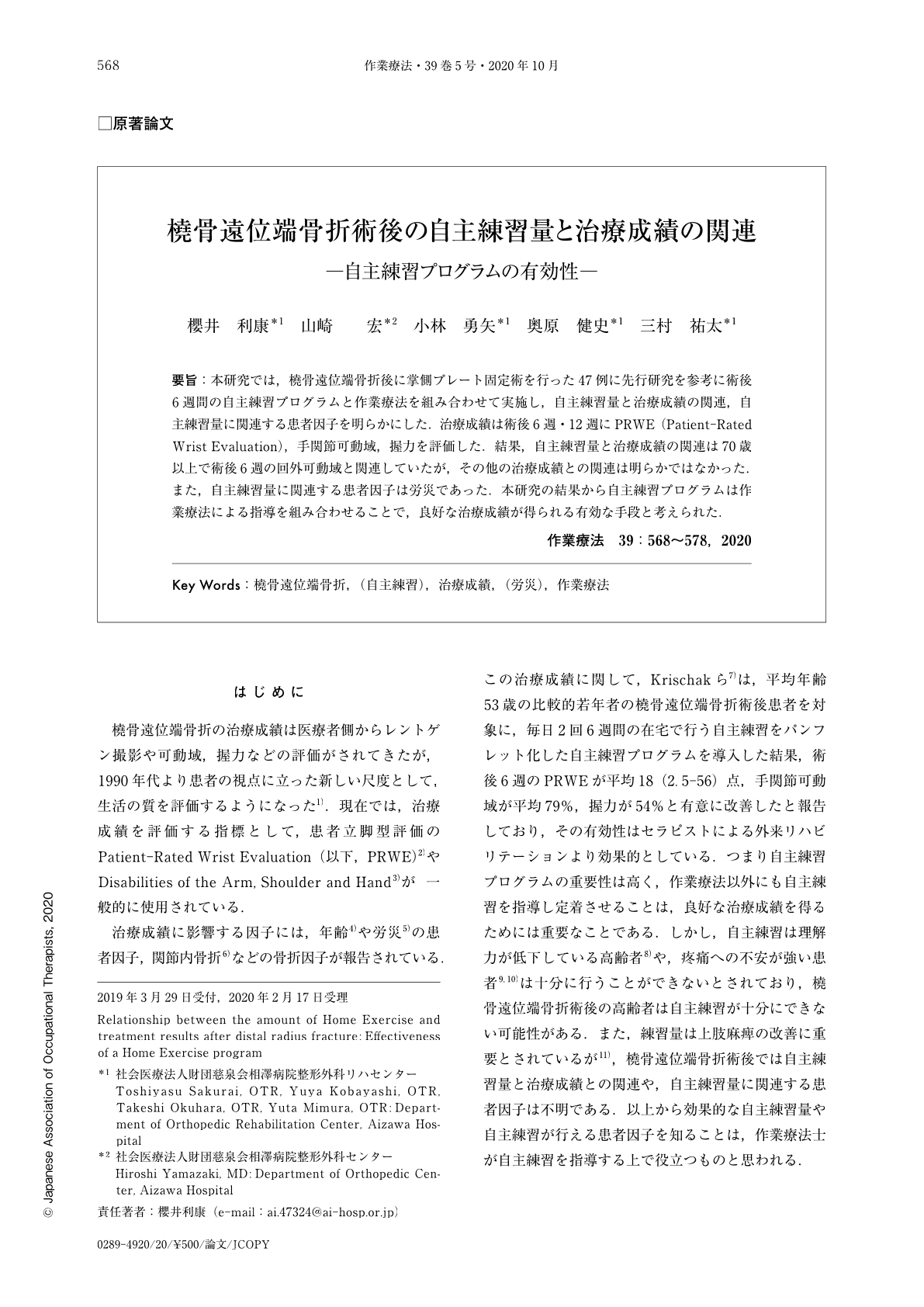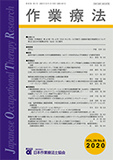Japanese
English
- 販売していません
- Abstract 文献概要
- 1ページ目 Look Inside
- 参考文献 Reference
- サイト内被引用 Cited by
要旨:本研究では,橈骨遠位端骨折後に掌側プレート固定術を行った47例に先行研究を参考に術後6週間の自主練習プログラムと作業療法を組み合わせて実施し,自主練習量と治療成績の関連,自主練習量に関連する患者因子を明らかにした.治療成績は術後6週・12週にPRWE(Patient-Rated Wrist Evaluation),手関節可動域,握力を評価した.結果,自主練習量と治療成績の関連は70歳以上で術後6週の回外可動域と関連していたが,その他の治療成績との関連は明らかではなかった.また,自主練習量に関連する患者因子は労災であった.本研究の結果から自主練習プログラムは作業療法による指導を組み合わせることで,良好な治療成績が得られる有効な手段と考えられた.
In this study, 47 patients after distal radius fractures were combined in a 6-week Home Exercise program and occupational therapy based on previous studies. The purpose of the study was to determine whether the amount of Home Exercise is related to the treatment results after distal radius fracture, and to clarify the characteristics of patients who do much Home Exercise. The treatment results were evaluated for PRWE (Patient-Rated Wrist Evaluation), wrist joint range of motion, and grip strength at 6 and 12 weeks after surgery. There was an association between amount of Home Exercise and treatment outcomes based on forearm supination range of six weeks after surgery of patients 70 years old or older. However, the correlation with other treatment results was not clear. The patient factor which markedly increased Home Exercise was work injury. The Home Exercise program is considered an effective means to obtain good treatment results even for the elderly with poor understanding of Home Exercise by combining the instruction with occupational therapy.

Copyright © 2020, Japanese Association of Occupational Therapists. All rights reserved.


